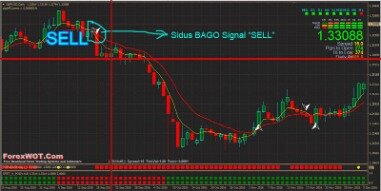Subtotal: ₹ 2,859
What Is the Elliott Wave Theory?

The Elliott Wave Theory is a technical analysis tool used to analyze and forecast financial markets based on the idea that markets move in repeating cycles of waves. In technical analysis, the Elliott Wave theory looks at long-term trends in price patterns and how they correspond with investor psychology. These price patterns or ‘waves’ depend on rules developed by Ralph Nelson Elliott in the 1930s.
Elliott Wave Analysis of SP500 – July 10th, 2023 – EWM Interactive
Elliott Wave Analysis of SP500 – July 10th, 2023.
Posted: Fri, 07 Jul 2023 20:26:32 GMT [source]
Besides his extensive derivative trading expertise, Adam is an expert in economics and behavioral finance. Adam received his master’s in economics from The New School for Social Research and his Ph.D. from the University of Wisconsin-Madison in sociology. He is a CFA charterholder as well as holding FINRA Series 7, 55 & 63 licenses. He currently researches and teaches economic sociology and the social studies of finance at the Hebrew University in Jerusalem.
3 Fibonacci Ratio Table
In this case, identifying an impulse wave creates an ideal set-up for trading. When traders identify an impulse wave that is showing upward price movement, they can take a long position. When they see the five wave pattern (signifying a market rally) coming to an end (signifying a pullback), they can then take a short position in anticipation of the imminent reversal.
The triangle correction is the only corrective pattern that does not follow the 3 wave pattern. Wave E has the tendency to either over or under-shoot the A-C trend line. • Motive waves move in the direction of the main trend and has internal structure of 5 waves.
Elliott Waves Personality
In real-time markets, it was observed that a motive wave could comprise three waves instead of five. In fact, most of the time, the market will see a motive wave that is composed of three waves. It is also possible that the market keeps moving in corrective waves. Therefore, three-wave trends are more common than five-wave trends.
- Forex and CFDs are leveraged products that incur a high level of risk and a small adverse market movement may expose the client to lose the entire invested capital.
- The lower bound will extend to help locate a possible support for wave 4.
- When they see the end of an impulse wave cycle in an uptrend, it provides an opportunity for them to take a short position (or sell) because the anticipated price movement will be against the trend.
- This next pattern repeats itself ad infinitum at ever-smaller scales.
According to Elliott Wave theory, long-term patterns are recognisable for their cycylical nature, an after-affect of human emotions. Waves may be seen in stock price change, which in theory should be a representation of investor and trader behavior. © 2023 Market data provided is at least 10-minutes delayed and hosted by Barchart Solutions. Information is provided ‘as-is’ and solely for informational purposes, not for trading purposes or advice, and is delayed. To see all exchange delays and terms of use please see Barchart’s disclaimer.
Deconstructing Motive Waves
These patterns can be seen in long term as well as short term charts. However, the Elliott Wave Theory takes the Dow Theory one step further by identifying a subset of waves within a larger wave structure. These waves make up what is called the fractal nature of an Elliott Wave sequence. This means that every wave is divided into many smaller sub-waves, each bearing a similarity to the overall wave pattern. Markets don’t move in the same way all the time, and they don’t announce their next move.
Although we are not specifically constrained from dealing ahead of our recommendations we do not seek to take advantage of them before they are provided to our clients. The use of corrective waves highlights the potential cross-study of Fibonacci retracements. Elliott didn’t specifically utilise Fibonacci levels, yet traders have applied them as a way to add greater https://forex-world.net/stocks/mastercard/ complexity to the traditional theory. Interestingly, the fact that the corrective wave has three legs can have implications for the wider use of highs and lows for the perception of trends. This does not necessarily negate the trend, but instead highlights a period of retracement that is stronger than the previous corrections seen within the impulsive move.
2.1 Regular Flats
Some of them are simple, some of them are complex, but all of them can be subdivided into three main categories. Impulse waves consist of five sub-waves that move in the same direction as the main trend. Three of them are motive and move in the direction of the main trend while the other are corrective waves. https://trading-market.org/fxdd-review-is-fxdd-a-scam-or-legit-forex-broker/ According to Prechter, Elliott never really speculated on why markets tend to present a 5-3 wave structure. Instead, he simply analyzed the market data and came to this conclusion. Elliott’s principle is simply a result of the inevitable market cycles created by human nature and crowd psychology.
Let’s have a look at the following chart made up of eight waves (five net up and three net down) labeled 1, 2, 3, 4, 5, A, B, and C. The image above highlights the instance when we see a third wave that is too short, thus negating the possibility that this is a correct wave count. Therefore, the subsequent waves remain part of the third wave rather than forming 4 and 5. Then there are guidelines, which may or may not be present or may vary in detail.
Fibonacci within waves
From there, you can work out which wave the market is currently in and make predictions about where it might head next. And this makes the Elliott Wave Theory different from other methods of market analysis. The majority of the technical analysis approaches focus on patterns and signals that stand aside from each other and aren’t related to one another. The power of the Elliott Wave Theory is that it gives traders the ability to see the bigger picture, not an individual setup only.

In September 2016, the index reached the historical high, and I spotted a visibly bullish wave pattern. I expected the market to rise much higher because the fifth wave was far https://currency-trading.org/cryptocurrencies/dash-cryptocurrency-price-quote-news/ from over. Accordingly, critics argue that the Elliott Wave Theory isn’t a legitimate theory due to its highly subjective nature, and relies on a loosely defined set of rules.
Elliot Wave Theory (EWT)
There is a five-wave advance (motive) in the direction of the trend of one larger degree, followed by a three-wave correction against the higher degree trend. You will notice in the chart that three of these sub-waves advance (waves 1, 3 and 5) and two of them correct or move downward (2 and 4). Waves 1, 3 and 5 in the motive wave are called “actionary” sub-waves.

 Original new Tablet battery for TOSHIBA AT10-B
Original new Tablet battery for TOSHIBA AT10-B